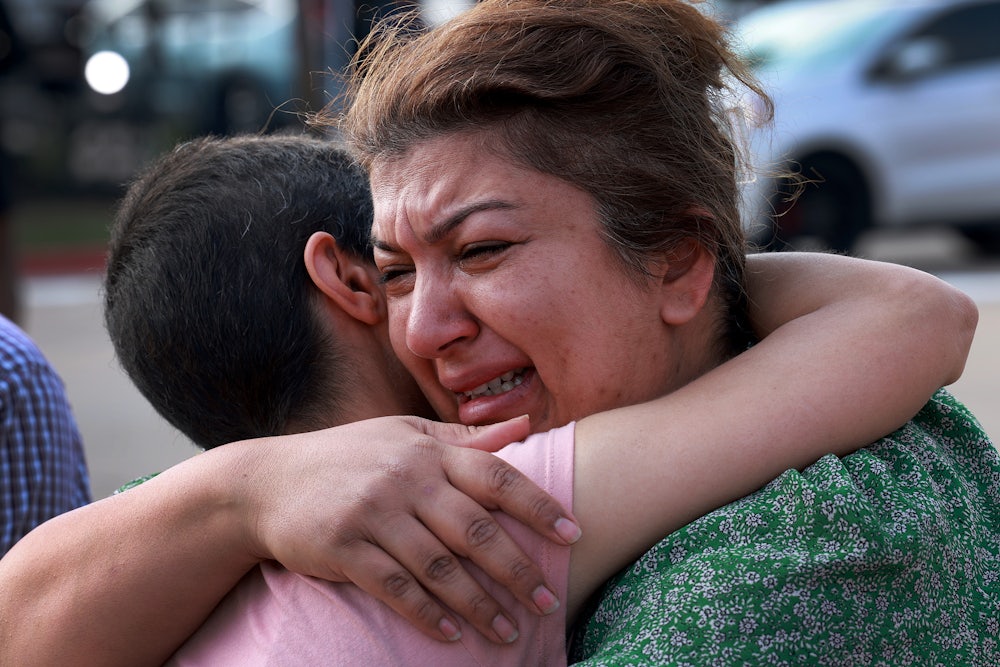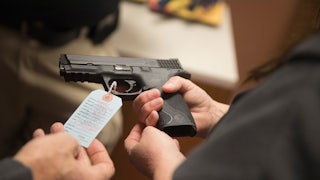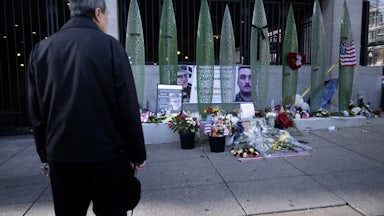In the fall of 2001, nearly 22 years ago, the nation was on edge. Nearly 3,000 Americans had been murdered simply because they had made the decisions to go to work and to board routine domestic airline flights on September 11. With deadly anthrax powder being mailed to prominent figures, such as NBC anchorman Tom Brokaw, the future seemed deadly. “No one can absolutely promise that people will be protected from terrorism when they go to a football game, ride in the subway or take their children shopping in the mall,” The New York Times wrote in an editorial five weeks after the 9/11 attacks. It was the dawn of what seemed to be an age of ever-present danger and fear.
That did indeed become America’s reality, but not because of terrorism. As of last year, there had been only 16 lethal jihadist attacks in the United States since 9/11, with the overall death toll measured in the dozens.
Meanwhile, thousands have been slaughtered in mass shootings since then, and the carnage is sadly increasing. With 21 gun-related mass murders in the nation so far in 2023, Americans have become terrified. There are no sanctuaries any more, as devastating shootings occur in banks, schools, and dance studios. One could easily imagine a Times editorial today—on the eve of the one-year anniversary of the elementary school massacre in Uvalde, Texas—stating, “No one can absolutely promise that people will be protected from gun violence when they go to a football game, ride in the subway or take their children shopping in the mall.”
Two new national surveys confirm that this fear shapes American life. An Economist/YouGov poll found that 59 percent of Americans (including 51 percent of Republicans) believe that a mass shooting is likely or somewhat likely to occur in their community. Even more chilling, one in eight Americans say that they have been personally affected by a mass shooting. In another telling indicator of these troubled times, the latest Axios/Ipsos American Health Index revealed that Americans consider easy access to guns to be the nation’s leading public health problem, above opioids and obesity.
And yet, unlike after 9/11, the country has not been united by these ongoing tragedies—and there are no signs that the political polarization over gun violence is ebbing.
Like everyone over the age of 30, I remember exactly where I was on that 2001 day (on the tarmac at LaGuardia, waiting on a flight to Washington that never took off). But I also recall the collective sense that the lives of every American had unalterably changed the moment the first plane hit the World Trade Center. Going back and reading the news clips from that time conjured up a nation panicked about foreign enemies and freaked out over anthrax. But Americans in 2001 were also blissfully innocent about the potential danger from one’s fellow citizens.
Israel was frequently invoked as a model for life in America after 9/11. A Times story from Jerusalem described Israel as a place “where college students have their bags checked on their way into libraries, not out.... Armed guards are posted outside restaurants, synagogues, and even weddings.” An analogous Knight Ridder article datelined Jerusalem predicted, “Americans may find their lives becoming more like danger-conscious Israelis ... where terrorism is a daily reality, and wariness is a daily response.” The syndicated newspaper story highlighted a then-unfathomable detail of life in Israel: “Guards patrol school entrances.”
Two decades later, terrorism is indeed a fact of daily life in America—in movies and TV dramas. Everywhere else, though, the issue has vanished in a way that would have been startling to any American in late 2001. Asked to list the most important issue facing the nation in a May Reuters/Ipsos poll, only 3 percent of Americans named terrorism.
But rather than feeling secure in our daily lives, we have gone from being menaced by the disciples of Osama bin Laden to being threatened by our fellow citizens. The mass killings at the World Trade Center, the Pentagon, and in Pennsylvania were driven by a hard-to-grasp militant Islamic fanaticism. Now gun massacres are triggered by twisted grudges and psychological demons, and made easier by porous laws in a nation with more guns than people.
During the anguished days after 9/11, newspapers were filled with articles offering advice on how to comfort children traumatized by TV images of planes crashing into buildings. A September 15, 2001, editorial in the Cincinnati Enquirer advised parents to “reassure children that you believe they are safe. Explain that the New York and Washington buildings were targeted for their symbolism and that you believe their schools and offices and homes are not at risk.” Parents today could not offer similar words of balm because there is no school in America that isn’t potentially a target for bursts of gunfire aimed at students. That is the tearful legacy of Sandy Hook, Parkland, and Uvalde.
The September 11 attacks prompted decisive action in America—for better and for worse. The U.S. waged two unsuccessful wars (Afghanistan and Iraq) while squandering an estimated $8 trillion in the quest for military security. It created the bureaucratic behemoth known as the Department of Homeland Security. Police departments around the country stocked up on ultimately useless military equipment as if every town in Oklahoma and North Dakota would face a standoff with terrorists. But there is also little doubt that we are much safer today because post-9/11 reforms at government agencies like the FBI and CIA helped thwart future terrorist attacks.
There has been no similar response in the face of constant mass-shooting deaths. Republicans offer grieving families their thoughts and prayers, and blame every shooting on mental illness—while reliably voting against more funding for mental health services. Their solution is to arm teachers and prepare would-be victims for the inevitable. Maybe requiring active shooter drills in schools will save lives, but what is certain is that we will be measuring for decades to come the psychological damage from these frightening practices.
After 9/11, Republicans led the charge in wrongly detaining and deporting noncitizen Muslims. But today, they won’t even agree to require criminal background checks for all gun buyers. They eagerly demonized innocent foreigners, yet they’re ensuring that violent felons have easy access to guns—because packing heat is every American’s right, apparently.
Pogo’s dictum, “We have met the enemy and he is us,” was originally created by cartoonist Walt Kelly for a 1970 Earth Day poster. But no slogan better reflects the realities of gun-loving America in 2023. The nation could dramatically reduce the risks of foreign terrorism because no one was claiming that an eighteenth-century constitutional amendment gave jihadists the right to fly airplanes into buildings. But the right-wing Supreme Court and Second Amendment zealots have left us nearly powerless in the face of gun violence.
Every loud noise in a shopping mall or elementary school brings back the kind of fears that we should have left behind after September 11.






